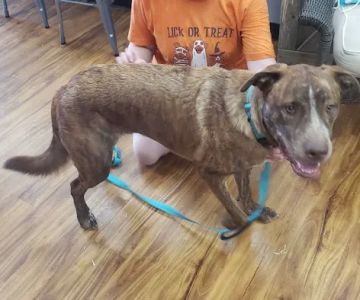How to Teach a Dog to Be Comfortable with the Vet
As a pet owner, one of the most stressful experiences can be taking your dog to the veterinarian. Many dogs, especially those with little exposure to vet visits, can develop anxiety when it's time for their check-up. The good news is, you can help your furry friend overcome their fear and make the vet visit a more pleasant experience. In this guide, I'll share some tips on how to teach your dog to be comfortable with the vet, based on both professional advice and personal experiences.
1. Start Early: Introduce Your Dog to the Vet Environment
Just like with any new environment, the earlier you start familiarizing your dog with the vet, the better. Ideally, you want to start this process when your dog is a puppy, but it’s never too late to begin. Take your dog to the vet's office for a visit, even when no medical procedures are scheduled. Let your dog explore the waiting area, meet the staff, and get used to the sights and smells of the clinic.
For example, when I first adopted my dog, Bailey, I started visiting the vet for short, non-medical visits. We’d just hang out in the waiting room, offer treats, and give her lots of praise. Over time, Bailey learned that the vet wasn’t a scary place, and now, she happily walks into the clinic without hesitation.
2. Make Vet Visits Positive with Rewards
Reward-based training is one of the most effective ways to teach your dog that the vet is a positive place. Every time you visit the clinic, bring along your dog’s favorite treats, toys, or even a new chew item. Use these rewards to encourage calm behavior during the visit, and to associate the vet's office with good things.
When Bailey was nervous about getting on the examination table, I would bring along her favorite treat, and she quickly learned that the table was not something to be afraid of but a place where good things happen.
3. Gradual Desensitization: Take Baby Steps
If your dog is especially fearful or nervous about the vet, consider a gradual desensitization approach. This means starting with smaller steps and increasing the level of interaction over time. Start by taking your dog for walks near the vet’s office, allowing them to see the clinic from a distance. Then, let your dog observe the inside of the clinic without entering. Next, gradually introduce more hands-on interactions, like letting the vet tech touch your dog’s paws or ears.
By slowly introducing your dog to these experiences, you allow them to process each step without overwhelming them. It’s important to take things at your dog’s pace, so don't rush through this process.
4. Use Calming Products for Added Comfort
There are various products designed to help calm anxious dogs. For instance, pheromone sprays or calming collars, like Adaptil, can be used to release scents that mimic a mother dog’s pheromones, helping to reduce anxiety. You can spray these products on your dog’s bed or collar before heading to the vet. For more extreme cases, you might want to talk to your vet about medications that can help manage anxiety during visits.
5. Build a Routine: Consistency Is Key
Dogs thrive on routine, and consistency can help reduce anxiety. Try to make your vet visits a regular part of your dog’s life, even if just for check-ups or to buy food and supplies. When your dog knows what to expect and it becomes a normal part of their routine, they will be less likely to feel stressed out.
Bailey’s first few vet visits were filled with anxiety, but as she became more accustomed to the process, she began to see the vet as just another stop during our usual routine. Consistency in visits helped her adjust and now, she’s perfectly calm during check-ups.
6. Stay Calm Yourself
Dogs are highly sensitive to our emotions, and if you’re nervous or stressed about the vet visit, your dog will pick up on that energy. It’s important to remain calm and composed when handling your dog before, during, and after the visit. If you approach the vet visit with a calm demeanor, your dog is more likely to mirror that behavior.
Whenever I take Bailey to the vet, I make sure to stay relaxed and upbeat. If I’m anxious, she’ll immediately sense it, and that can make her more nervous as well. By staying calm, I provide the reassurance she needs to feel safe and secure.
7. Be Patient and Understanding
Every dog is different, and some may take longer to get used to the vet than others. It’s important to be patient and understanding, as rushing or forcing your dog through the process can lead to increased fear and anxiety. If your dog is struggling with vet visits, consider consulting a professional dog trainer or behaviorist who can help develop a personalized plan for your dog’s specific needs.
Bailey took a while to get comfortable with certain aspects of the vet visit, but after months of gradual desensitization and positive reinforcement, she now enjoys her visits. It wasn’t an overnight change, but with consistency, patience, and love, she got there.
Conclusion: Helping Your Dog Feel Comfortable at the Vet
With patience, positive reinforcement, and the right techniques, you can help your dog become more comfortable with vet visits. Remember, the goal is to make the vet’s office a place where your dog feels safe and calm, not fearful or anxious. Start early, take baby steps, and always reward your dog for their positive behavior. Over time, your dog will learn that going to the vet is just another part of their routine, and you’ll both feel more relaxed during the process.
If you’re looking for the right products and services to help your dog feel more comfortable during their vet visits, visit Hidden Brook Veterinary for expert advice and recommendations.











